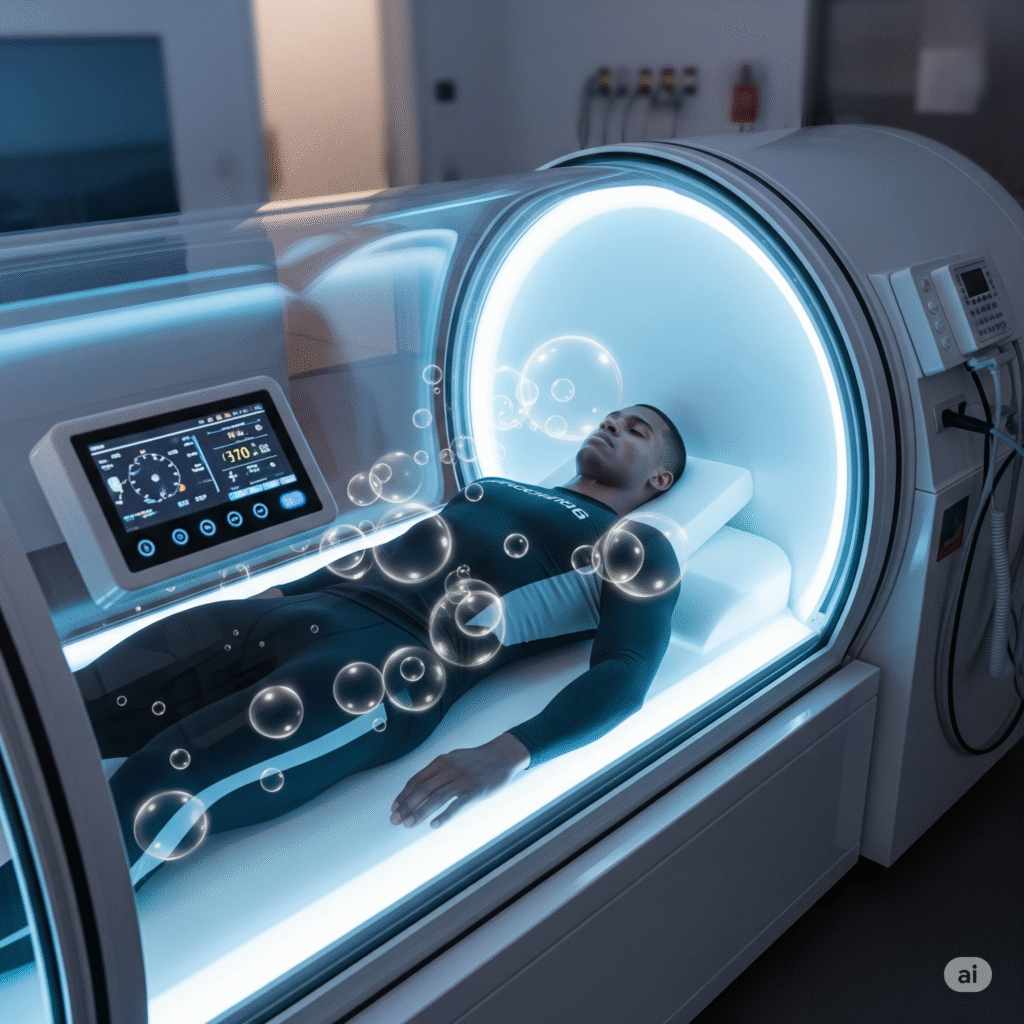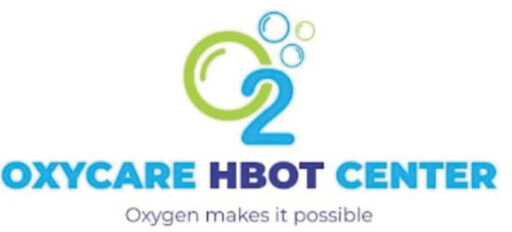
In the high-stakes world of competitive sports, where a fraction of a second or a single-point advantage can mean the difference between victory and defeat, athletes are continually searching for the next breakthrough in performance and recovery. From cryotherapy to advanced nutrition, the quest for a competitive edge is relentless. Recently, one treatment has gained significant attention in locker rooms and training facilities: Hyperbaric Oxygen Therapy (HBOT).
Promoted by high-profile athletes like LeBron James and Michael Phelps, HBOT is praised by some as a revolutionary tool for accelerated healing, enhanced performance, and injury prevention. But what does the science say? Is HBOT a miracle cure, or is it simply an overhyped trend? This comprehensive guide will explore the science behind HBOT, its applications in sports, existing evidence, and critical considerations for athletes thinking of incorporating this therapy.
What is Hyperbaric Oxygen Therapy?
Hyperbaric Oxygen Therapy (HBOT) involves breathing 100% oxygen in a pressurized environment, typically in a specialized chamber. The pressure inside the chamber is increased to three times higher than normal atmospheric pressure, allowing the body to absorb much more oxygen than would be possible under regular conditions. This super-oxygenated state has profound effects on the body, forming the basis for its therapeutic applications in both medicine and sports.
The Mechanisms of HBOT: How Does It Work?
The therapeutic benefits of HBOT stem from its ability to enhance the body’s natural healing processes. Here’s how it works:
- Increased Oxygen Delivery: Under normal conditions, oxygen is carried by red blood cells. HBOT increases pressure, allowing oxygen to dissolve directly into the blood plasma, cerebrospinal fluid, and other body fluids. This helps deliver oxygen to tissues with impaired circulation due to injury or inflammation.
- Reduced Inflammation and Swelling: HBOT induces vasoconstriction (narrowing of blood vessels), reducing swelling and inflammation, which is especially useful for acute injuries such as sprains or muscle tears.
- Collagen Production and Tissue Regeneration: Oxygen is essential for collagen production, a protein that is vital for repairing tissues like muscles, ligaments, and tendons. HBOT stimulates collagen synthesis, helping tissues heal faster and more robustly.
- Angiogenesis (New Blood Vessel Formation): HBOT promotes the formation of new blood vessels in damaged tissues, improving blood flow and ensuring a steady supply of oxygen and nutrients for healing.
- Enhanced Immune Function: The increased oxygen levels can enhance the ability of white blood cells to fight infections, helping athletes recover from surgery or prevent infections in injured tissues.
HBOT in the Treatment of Sports Injuries
Acute Injuries
For injuries such as muscle strains, ligament sprains, or muscle tears, HBOT may offer several benefits:
- Reduced Recovery Time: Accelerates healing by boosting oxygen delivery to damaged tissues.
- Decreases Swelling and Pain: Helps control inflammation and reduce discomfort.
- Minimizes Scarring: By promoting collagen production, HBOT aids in minimizing scarring from injuries.
While anecdotal evidence from athletes is generally positive, scientific research is still evolving. HBOT should be seen as an adjunct therapy rather than a substitute for traditional methods like R.I.C.E. (Rest, Ice, Compression, Elevation).
Chronic Injuries
HBOT may also help athletes with chronic conditions like tendonitis or stress fractures by breaking the cycle of inflammation and promoting healing in areas that have been resistant to other treatments.
Post-Surgery Recovery: A Faster Return to the Field?
For athletes recovering from surgery (e.g., ACL repairs or Achilles tendon ruptures), HBOT can offer the following advantages:
- Reduced Swelling and Pain: By controlling inflammation, HBOT helps alleviate post-operative discomfort.
- Lower Risk of Infection: The antibacterial effects of HBOT help reduce the risk of infections in surgical sites.
- Accelerated Healing: By enhancing tissue regeneration, HBOT allows athletes to return to training and competition sooner.
The Quest for Peak Performance: Can HBOT Give You an Edge?
Beyond injury recovery, some athletes are using HBOT to enhance their performance. Proposed benefits include:
- Reduced Fatigue and Faster Muscle Recovery: HBOT helps flush out metabolic waste products, reducing fatigue and speeding up recovery between workouts and competitions.
- Increased Stamina and VO2 Max: Studies suggest HBOT may improve mitochondrial function and increase VO2 max, the maximum amount of oxygen the body can utilize during exercise. However, further research is needed to fully validate these claims.
The Science vs. The Hype: A Critical Look at the Evidence
While the potential benefits of HBOT are enticing, it’s essential to evaluate the science behind the therapy critically:
- Lack of High-Quality Research: Most studies related to sports medicine applications of HBOT are small-scale or lack robust design. There is a need for large-scale, randomized controlled trials to draw definitive conclusions.
- Mixed Results: Existing studies have shown inconsistent results, with some reporting modest benefits and others showing no significant advantage over placebo treatments. A Cochrane review, a leading source of evidence-based medicine, concluded that there is insufficient evidence to recommend HBOT for soft tissue injuries.
- FDA’s Stance: The U.S. Food and Drug Administration (FDA) has approved HBOT for specific medical conditions (e.g., decompression sickness, carbon monoxide poisoning, non-healing wounds) but not for sports injuries. The FDA also warns about the risks of unaccredited clinics offering unproven treatments.
The Controversy: “Hard” vs. “Mild” HBOT
Understanding the difference between medical-grade HBOT (“Hard” HBOT) and “Mild” HBOT (“Soft” HBOT) is crucial:
- Medical-Grade HBOT: Involves higher pressures (greater than 1.5 ATA) and 100% oxygen. It has been studied for various medical conditions and is administered under strict medical supervision.
- “Mild” HBOT: Typically used in wellness centres, it involves lower pressures (around 1.3 ATA) and lower oxygen concentrations. There is limited scientific evidence supporting its therapeutic claims. But now, new wellness protocols involve pressure more than 1.75 -2 ATA
Practical Considerations: Safety, Costs, and Finding a Reputable Clinic
Before considering HBOT, athletes should be aware of the following factors:
- Safety: HBOT is generally safe, but potential risks include ear and sinus barotrauma, temporary vision changes, and in rare cases, oxygen toxicity or lung damage. Always consult a trained professional.
- Cost: A single session can cost several hundred dollars. Since HBOT is not FDA-approved for sports injuries, most insurance policies will not cover the cost.
- Finding a Reputable Clinic: Choose a facility accredited by the Undersea and Hyperbaric Medical Society (UHMS) and staffed by certified professionals to ensure safety and efficacy. Oxycare HBOT centre in Ahmedabad is one of those centres.
The Future of HBOT in Sports
The future of HBOT in sports medicine depends on further research to determine:
- Which injuries benefit most from HBOT.
- Optimal treatment protocols (pressure, duration, frequency).
- Long-term effects of repeated sessions.
- How HBOT can complement other therapies like physiotherapy and cryotherapy.
The development of portable and more accessible HBOT chambers could also change how athletes use this therapy.
The Bottom Line: Is HBOT Right for You?
HBOT holds promise for accelerating recovery, reducing injury-related inflammation, and improving performance. However, the lack of robust scientific evidence means it should not be considered a cure-all. It’s essential for athletes to consult with sports medicine professionals before adding HBOT to their recovery routine.
Frequently Asked Questions (FAQs)
1. What does a session of HBOT feel like?
A typical session is painless. As the chamber’s pressure increases, you may experience a feeling of fullness in your ears, similar to flying in an airplane. Swallowing or yawning usually relieves this sensation.
2. How many sessions of HBOT are needed for a sports injury?
The number of sessions varies depending on the severity of the injury. For acute injuries, 5 to 10 sessions may be recommended, while chronic conditions may require 20 to 40 sessions.
3. Is HBOT safe for all athletes?
HBOT is not suitable for everyone. It is contraindicated for individuals with certain medical conditions, such as untreated pneumothorax or severe ear and sinus issues. A medical evaluation is necessary before starting treatment.
4. What is the difference between HBOT and mHBOT?
Medical-grade HBOT uses higher pressures and 100% oxygen, with proven effectiveness for specific medical conditions. “Mild” HBOT uses lower pressures and oxygen levels, with limited evidence supporting its benefits.
5. Does insurance cover HBOT for sports injuries?
Most insurance plans do not cover HBOT for sports injuries as it is considered “off-label” use.
6. Can HBOT really improve my athletic performance?
Some studies suggest that HBOT may reduce fatigue and improve recovery. However, more research is needed to confirm its impact on overall athletic performance.








Leave a Reply